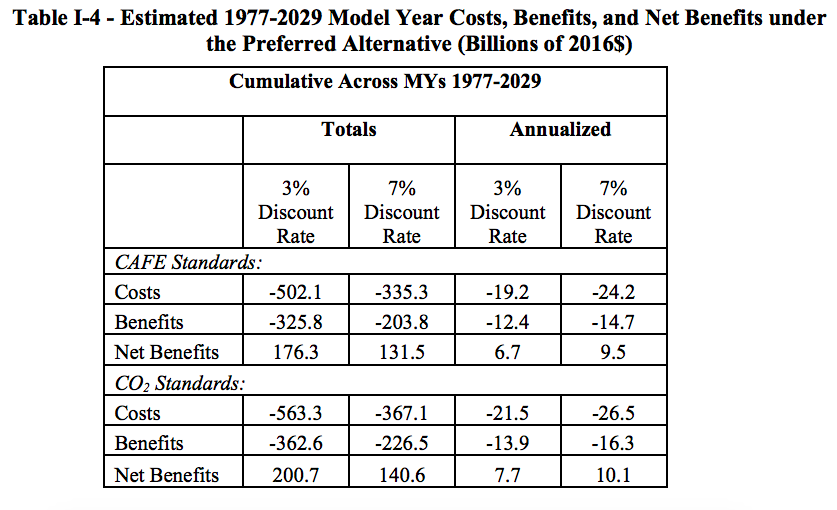Insight
August 2, 2018
EPA, DOT Propose Freeze on Vehicle Emissions Standards
On August 2, 2018, the Environmental Protection Agency (EPA) and Department of Transportation (DOT) proposed maintaining future vehicle emissions standards for cars and light trucks at model year (MY) 2020 levels. The agencies estimate cost savings of between $335-$563 billion. If finalized as is, the rule would be by far the largest deregulatory measure of the Trump Administration.
DOT is required to set an average limit for miles per gallon of fuel for vehicles under energy efficiency laws passed in 1975 and 2007. Since its endangerment finding for carbon dioxide in 2009, EPA is required to set limits on CO2 emissions from vehicles. Because these requirements are inextricably linked, the agencies collaborate to set average mileage standards.
The agencies issued a rule in 2012 that established standards for cars in MY2017-2025. This rule remains the most expensive rule the American Action Forum has ever tracked. Of note, the standards for MY2022-2025 applied only to EPA’s portion of the rule, as DOT is limited to setting standards in five-year intervals. Therefore, DOT needed to issue an additional rulemaking to update these later year standards.
In the last month of the Obama Administration, EPA issued a mid-term determination of its 2012 standards that found the 2022-2025 limits adequate in an attempt to lock in the standards. However, this determination was issued more than a year ahead of the April 1, 2018 deadline. President Trump quickly ordered a new mid-term evaluation. EPA’s reevaluation found that the 2022-2025 standards were not appropriate.
The Trump Administration’s proposal would lock in the MY2020 threshold of 37 miles-per-gallon for all model years through MY2026. In doing so, the agencies expect to achieve savings of up to $563 billion, as the table from the proposed rule below shows.
The agencies evaluated eight alternatives and chose the one that maximized net benefits. The primary driver of these net benefits is the potential value of saving roughly 12,700 lives. The agencies contend that if vehicles are less efficient, people will drive less, accounting for fewer accidents. Accordingly, though the agencies are forgoing between $200-$362 billion in benefits from the 2012 rule, the savings from the revisions result in up to $200.7 billion in net benefits.
Once the proposal is published in the Federal Register, the public will have 60 days to comment. The proposed rule is certain to be hotly debated, and once finalized, litigated. Two areas of contention exist. One is that the agencies’ regulatory impact analysis is substantially different from the one issued in 2012. As the agencies note, “the proposal in the NPRM is entirely de novo, based on an entirely new analysis reflecting the best and most up-to-date information available to the agencies at the time of this rulemaking.” This rule is likely to be a test case regarding how much deference courts will give agencies that significantly revise their previous methodology and findings.
The second is the proposed revocation of California’s waiver that allows it to set higher standards, which other states can choose to adopt. Further adoption of California’s standards would create a de facto standard across the industry that effectively nullifies the federal government’s revised standards. EPA has the authority to take away this waiver if it finds, among other reasons, that California no longer has “compelling or extraordinary conditions” that require its own standards. California has already indicated it will challenge the revocation.
The proposal also kicks off what will likely be an active period of EPA deregulatory actions. In addition to the vehicle emissions standards, the agency is expected to release proposals to substantially revise other major Obama-era rules soon, such as the definition of the Waters of the United States and the Clean Power Plan.











